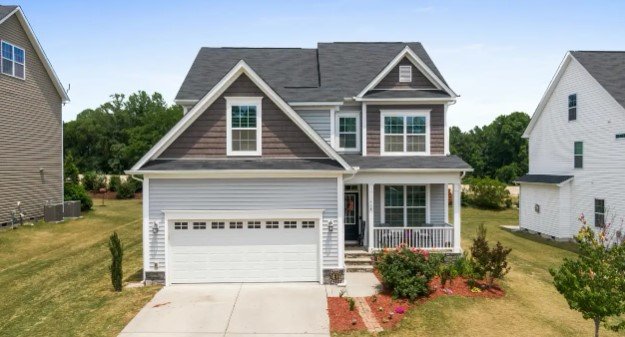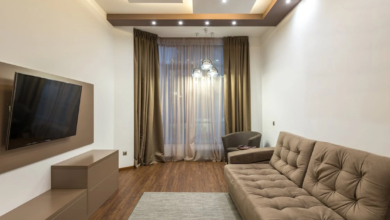How to Address a Garage Door That Moves Slowly or Jerks During Operation

Every homeowner values a garage door that operates seamlessly. It’s not just about convenience, it’s also about safety and peace of mind. But what happens when your garage door hesitates, moves slowly, or jerks erratically during operation? These issues can be frustrating and worrisome. Fortunately, understanding the root causes and knowing how to address them can restore smooth functionality. This blog post dives into common problems with garage doors and offers practical solutions to get them back on track.
Understand the Importance of a Functional Garage Door
A well-functioning garage door is more than a convenience feature. It serves as a critical barrier protecting your home from external elements and potential intruders. Beyond security, it ensures that daily routines run smoothly, without the hassle of dealing with a malfunctioning entryway. Regular maintenance and timely repairs can prevent many issues that lead to slow or jerky movement.
Identify Causes of Slow or Jerky Movements
Understanding the causes behind a garage door’s sluggish or erratic behavior is the first step to addressing the problem. One common issue is lack of lubrication. The moving parts of a garage door, such as hinges, rollers, and tracks, require regular lubrication to function smoothly. Without it, friction increases, causing slow or jerky movements.
Worn-out components also contribute to operational issues. Over time, parts like springs, cables, and rollers wear down and lose their efficiency. This wear and tear can lead to uneven movement, making the door jerk or move slowly.
Additionally, misaligned tracks can be a culprit. When tracks are not aligned correctly, the door struggles to move smoothly along its path. Misalignment can result from accidental bumps, or gradual shifts due to regular use.
Evaluate The Role of Balance in Garage Doors
A balanced garage door is crucial for smooth operation. An unbalanced door can strain the opener, leading to slow and jerky movements. To check the balance, disconnect the opener and manually lift the door halfway. If it remains in place, it’s balanced. If it falls or rises, the balance needs adjustment.
Addressing balance issues often requires professional help. Attempting to fix these on your own can be dangerous, especially if you’re not familiar with the mechanics of the door. Professionals have the tools and expertise to correct balance problems safely and effectively.
Read also: Complete Home Comfort: Installing Air Conditioning and Water Heater Systems
Achieve Smooth Movements With Lubrication
Lubrication is essential for maintaining the smooth operation of your garage door. Regularly applying a silicone-based lubricant to hinges, rollers, and tracks can significantly reduce friction. This simple maintenance task can prevent many operational issues.
Ensure to clean the parts before lubrication. Dust and debris can accumulate over time, hindering the effectiveness of the lubricant. A clean, well-lubricated garage door moves effortlessly, reducing strain on the opener and extending the life of the components.
Identify and Replace Worn-Out Parts
Identifying worn-out parts is crucial for maintaining your garage door. Look for signs of wear, such as frayed cables, rusty rollers, and stretched springs. These components should be replaced promptly to ensure smooth operation.
Replacing worn-out parts can be complex and sometimes dangerous. Hiring a professional service like All Service Garage Doors, LLC ensures the job is done correctly and safely. Their expertise can also help identify other potential issues before they become major problems.
Address Misaligned Tracks
Tracks play a vital role in the movement of your garage door. Misaligned tracks can cause the door to bind, jerk, or even stop moving altogether. Regularly inspect the tracks for alignment issues, such as gaps between the rollers and rails or bolts that have come loose.
Correcting misaligned tracks often involves loosening the mounting brackets and gently tapping the tracks back into position. This task requires precision to avoid further misalignment or damage. Consulting with a professional can guarantee the tracks are properly realigned.
Perform Regular Maintenance
Regular maintenance is key to preventing operational issues with your garage door. This includes checking and tightening hardware, lubricating moving parts, and inspecting the door’s balance and alignment. Scheduled maintenance can catch potential problems early, saving you time and money in the long run.
Many homeowners overlook the importance of regular maintenance until a significant issue arises. However, a proactive approach can keep your garage door functioning smoothly for years. Consider setting up a maintenance schedule or hiring a professional service to perform these checks regularly.
Know When to Call a Professional
Many garage door issues can be resolved with simple maintenance, but some require professional help. If you’ve tried basic troubleshooting and your door still moves slowly or jerks, it’s time to call in the experts. Attempting complex repairs without the right knowledge and tools can be dangerous and may worsen the problem.
Professionals have the experience and equipment to diagnose and fix issues efficiently. Whether it’s balancing the door, replacing worn parts, or realigning tracks, their expertise ensures your garage door operates smoothly and safely.
A functioning garage door enhances the convenience and security of your home. By understanding common causes of slow or jerky movements and performing regular maintenance, you can keep your garage door efficient. While DIY solutions can address minor issues, professional help is crucial for complex problems. For more tips and advice, consider booking a consultation with a trusted garage door expert.





